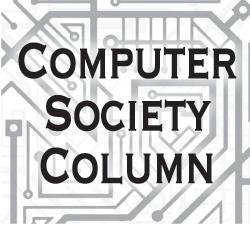
If you know anything about computers, then you would have heard about Steve Jobs. The name Steve Jobs is synonymous with Apple computers. If someone is slightly interested in innovation, then Jobs is a case study. If you’re into entrepreneurship, this man is an inspiration. Bottom line, he is well worth reading about!
Apple
In the late 1970s, Steve Jobs co-founded Apple Computers with Steve Wozniak and Mike Markkula. They designed, developed, and marketed one of the first commercially successful lines of personal computers, known as the Apple II series.
In the early 1980s, Jobs was among the first to see the commercial potential of mouse-driven graphical user interface (GUI), which led to the creation of the Macintosh Computer. From that point onwards,Apple was a true trend setter in the ICT scene.
Steve Jobs’ biological parents were Abdulfattah John Jandali (a Syrian Muslim) and Joanne Simpson (an American), but he was adopted by Paul and Clara Jobs very early in his life.
History of Apple computers
Apple was started in the late 70s, where they took the concept of a usable personal computer forward. In 1983, Steve Jobs whisked John Sculley away from Pepsi-Cola to serve as Apple’s CEO, asking, “Do you want to sell sugar water for the rest of your life, or do you want to come with me and change the world?”. At Apple’s annual shareholders meeting in 1984, an emotional Jobs introduced the Macintosh computer to a wildly enthusiastic audience. The Macintosh, tenderly known as ‘Mac’ became the first commercially successful small computer with a graphical user interface.
The development of the Mac was initially by JefRaskin, and eventually taken over by Jobs.
However, after losing a power struggle with the board of directors of Apple in 1985, Jobs resigned from Apple and founded NeXT, a computer platform development company specializing in the higher-education and business markets.
Apple’s subsequent buyout of NeXT in 1996 brought Jobs back to the company he co-founded, and he served as its CEO from 1997 until 2011.
That was one of the most spoken about comebacks in the world’s corporate history.
In 1986, he acquired the computer graphics division of Lucas Film Ltd which later transformed into a venture called Pixar Animation Studios. He remained CEO and the majority shareholder at 50.1% until its acquisition by the Walt Disney Company in 2006.
This resulted in Steve Jobs becoming Disney’s largest individual shareholder (7% ownership) and a member of Disney’s Board of Directors.
Soon after he returned back to Apple in 1997, he released the popular Apple iMac personal computers series.
iPod
Later Apple has branched out into other digital appliances. In 2007, Jobs announced that Apple Computer Inc. would be known as Apple Inc. because computers were no longer the main focus of the company, which had shifted its emphasis to mobile electronic devices.
With the introduction of the iPod portable music player, iTunes digital music software, and the iTunes Store, the company made forays into consumer electronics and music distribution. These products have become widely used personal gadgets across the world. Introduction of iPods resulted in killing the markets of pocket radios and walkmans. Apple introduced a revolution in people’s lives, especially in the west.
In 2007, Apple entered the cellular phone business with the introduction of the iPhone, a multi-touch display cell phone, which also included the features of an iPod and, with its own mobile browser, revolutionized the mobile browsing scene.
What caught the attention of the public was the ease at which a flick of a finger across the screen can move, flip and send objects reeling. The users found the touch screen a lot more enjoyable and easy-to-use than the conventional keypad.
While stimulating innovation, Jobs also reminded his employees that “real artists ship” by which he means that delivering working products on time is as important as innovation and attractive design.iPhone carried this vision.
The latest in this ‘i’ series which really gave meaning to innovation is the iPad. At the launching ceremony Jobs stood on the stage with a handy sized envelope, from which he pulled out a sleek iPad, much to the amazement of the audience.
The iPad is thinner and lighter than any notebook or laptop. On the day of its launch in the US in 2010 it sold more than 300,000 units on that day alone, and reaching 500,000 by the end of the first week.
The iPad has become popular for its ‘applications’ or ‘apps’ based approach, where one can browse the internet, read and send email, enjoy photos, watch videos, listen to music, play games and read e-books.
If these apps are not enough, one can simply download others from their website for a nominal fee. These apps have found their way to the more recent iPhones.
Apple is one of the largest companies in the world by market capitalization and a valuable technology company.
Personality
Steve Jobs’ leadership style is considered to be tough and it didn’t work for everyone at Apple, but then again he knew how to pull things together, but above all how to drive a vision home.
Even when things were tough, people had trust in Jobs to lead them through. And I believe that’s an inspiration to those who like to study his style.
Steve Jobs passed away on October 5, 2011.
Yasas Vishuddhi Abeywickrama
President, Computer Society
of Sri Lanka
